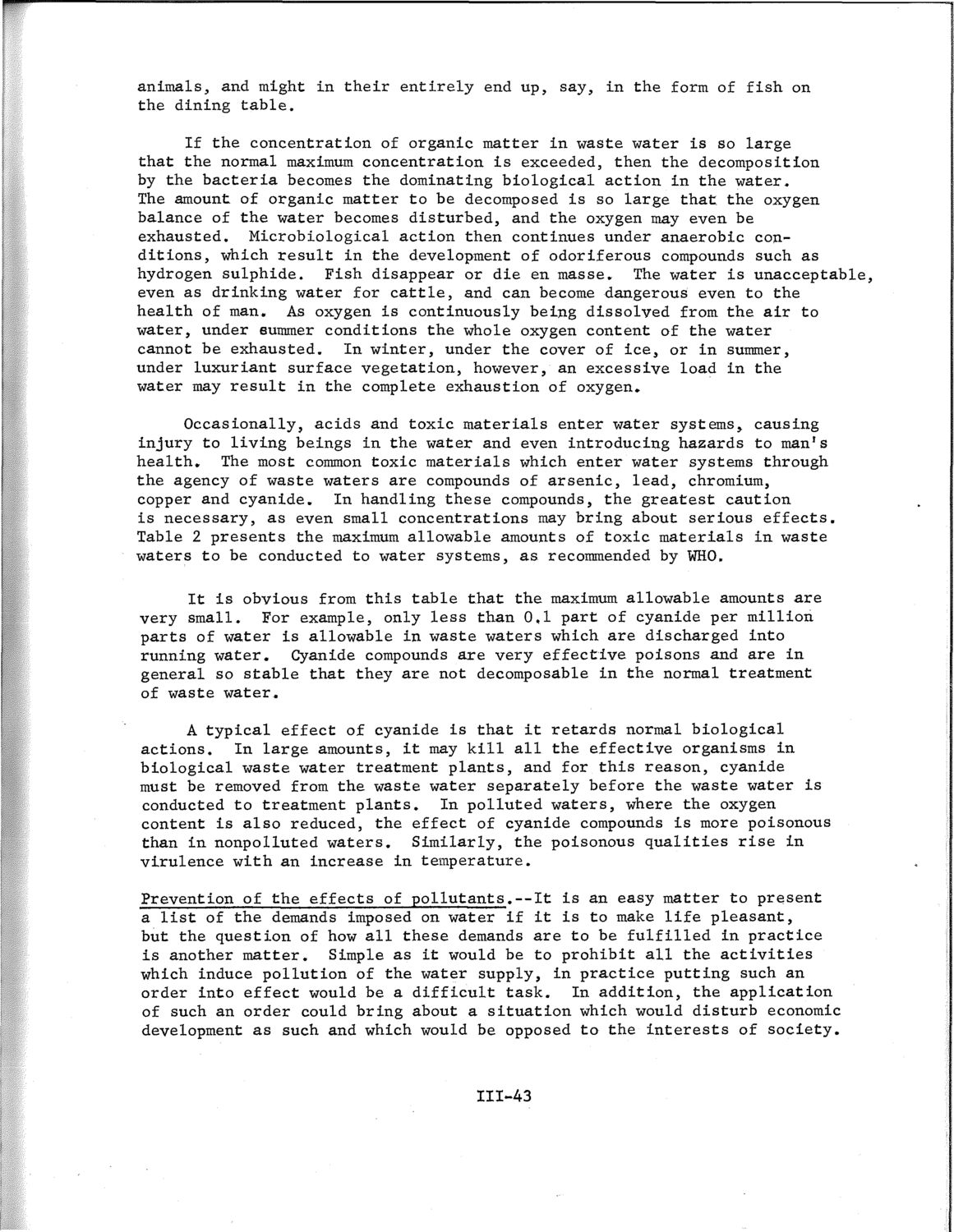| |
| |
Caption: SWE - Proceedings of the First International Conference of Women Engineers and Scientists
This is a reduced-resolution page image for fast online browsing.

EXTRACTED TEXT FROM PAGE:
animals, and might in their entirely end up, say, in the form of fish on the dining table. If the concentration of organic matter in waste water is so large that the normal maximum concentration is exceeded, then the decomposition by the bacteria becomes the dominating biological action in the water. The amount of organic matter to be decomposed is so large that the oxygen balance of the water becomes disturbed, and the oxygen may even be exhausted. Microbiological action then continues under anaerobic conditions, which result in the development of odoriferous compounds such as hydrogen sulphide. Fish disappear or die en masse. The water is unacceptable, even as drinking water for cattle, and can become dangerous even to the health of man. As oxygen is continuously being dissolved from the air to water, under summer conditions the whole oxygen content of the water cannot be exhausted. In winter, under the cover of ice, or in summer, under luxuriant surface vegetation, however, an excessive load in the water may result in the complete exhaustion of oxygen. Occasionally, acids and toxic materials enter water systems, causing injury to living beings in the water and even introducing hazards to man's health. The most common toxic materials which enter water systems through the agency of waste waters are compounds of arsenic, lead, chromium, copper and cyanide. In handling these compounds, the greatest caution is necessary, as even small concentrations may bring about serious effects. Table 2 presents the maximum allowable amounts of toxic materials in waste waters to be conducted to water systems, as recommended by WHO. It is obvious from this table that the maximum allowable amounts are very small. For example, only less than 0,1 part of cyanide per million parts of water is allowable in waste waters which are discharged into running water. Cyanide compounds are very effective poisons and are in general so stable that they are not decomposable in the normal treatment of waste water. A typical effect of cyanide is that it retards normal biological actions. In large amounts, it may kill all the effective organisms in biological waste water treatment plants, and for this reason, cyanide must be removed from the waste water separately before the waste water is conducted to treatment plants. In polluted waters, where the oxygen content is also reduced, the effect of cyanide compounds Is more poisonous than in nonpolluted waters. Similarly, the poisonous qualities rise in virulence with an increase in temperature. Prevention of the effects of pollutants.—It is an easy matter to present a list of the demands imposed on water if it is to make life pleasant, but the question of how all these demands are to be fulfilled in practice is another matter. Simple as it would be to prohibit all the activities which induce pollution of the water supply, in practice putting such an order into effect would be a difficult task. In addition, the application of such an order could bring about a situation which would disturb economic development as such and which would be opposed to the interests of society. 111-43
| |